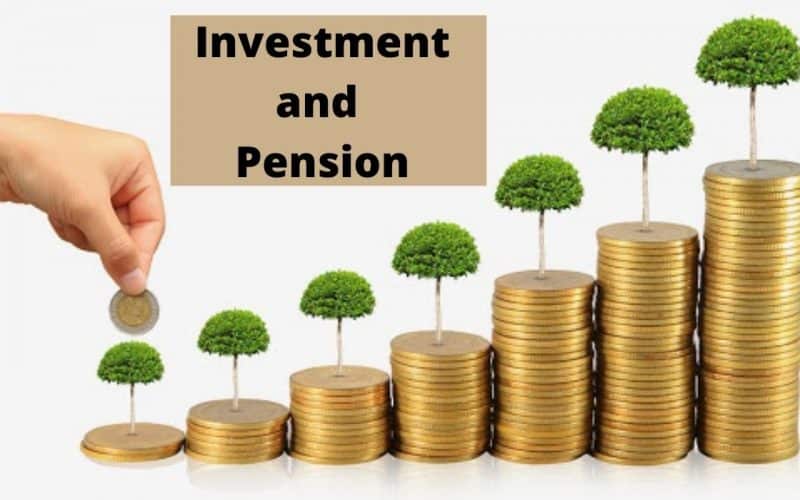We all know that planning your Pensions and Investments is key to retirement security but when is the best time to do that?
Life comes in stages and each stage throws up its own challenges and opportunities. One of the most crucial of all life stages is the retirement phase which comes after one has actively engaged his time in work as an employee over a period of time.
Retirement generally refers to the duration of a person’s life after they have left the workforce. This means a person who has retired has withdrawn from any type of labor and generally engages in activities for leisure purposes.
Usually, retirement begins when a person reaches a particular age. The reason many people work is to satisfy various needs, particularly financial needs. Hence, even when they don’t feel like they still work. That is, they do not have full control of their time. True retirement is not tied to any age but a state of financial freedom.
The need to cope with retirement life is a critical issue both by employers and employees. Hence, workers are often rewarded with pension and other retirement benefits.
What is Pension?
An online encyclopedia defines pension as a fund into which a sum of money is added during an employee’s employment years and from which payments are drawn to support the person’s retirement from work in the form of periodic payments.
A pension is a benefit plan, or social security plan where a fixed sum is paid regularly to a person, or a defined contribution plan, under which a fixed sum is invested that then becomes available at retirement age.
Types of Pension Funds
Pension funds are investment pools that pay for workers’ retirements. Funds are paid for by either employee, employers, or both.
Pension funds are generally categorized into two types
- Defined-Benefit Pension Plan
- Defined-Contribution Pension Plan
Defined-Benefit plan
This pension plan is the most common pension plan an employee is entitled to a specified payment amount in retirement. Defined-benefit plans provide eligible employees with guaranteed income for life when they retire.
Employers guarantee a specific retirement benefit amount for each participant that is based on factors such as the employee’s salary and years of service.
Employees have little control over the funds until they are received in retirement. The company takes responsibility for the investment and for its distribution to the retired employee. That means the employer bears the risk that the returns on the investment will not cover the defined-benefit amount due to a retired employee.
Defined-Contribution plan
In a defined contribution plan, the employee’s benefits depend on how well the fund does. The employer doesn’t have to pay out defined benefits if the fund drops in value. All the risk is transferred to the employee. The shift in risk is the most important difference between the defined benefit and the defined contribution plan.
What Is an Investment?
An investment is an asset or item acquired with the goal of generating income or appreciation over a time period. It always concerns the outlay of some asset today(time, money, or effort) in hopes of a greater payoff in the future than what was originally put in. The act of investing has the goal of generating income and increasing value over time.
An investment can be any mechanism used for generating future income. This includes the purchase of bonds, stocks, or real estate property, among other examples. Buying a property that can be used to make products can also be thought of as an investment.
What is the Difference Between Pension and Investment?
When compared to pensions, which can often only be accessed after the age of 55, the primary benefit of saving or investing in something other than a pension is that you will have the ability to access the money earlier if you so choose.
Investment in Pension Funds
The availability of long-term financing is a critical factor in any economy, private finance is required to supplement the government’s constrained financial resources.
Pension funds remain a potential source of private financing to get funds in most economies, but the funds can only be invested indirectly through structured instruments, such as bonds and funds.
There are regulations and guidelines that govern the investment of pension funds, and there are bodies responsible for that in various countries.
Below are some of the most common investments to which pension funds are channeled.
- Infrastructure
- Real Estate
- Fixed Income Investments
- Private Equity
- Inflation Protection
- Stocks
#1. Infrastructure
As the need for investment in infrastructure continues to grow global demand for financing for infrastructure projects has significantly increased around the world. Given the long-term growth of infrastructure investments, pension funds have become the best alternative source of funding. Such investments cover a wide range of projects – from economic infrastructure such as transport to social projects such as hospitals.
What is infrastructure?
Infrastructure is the system of public works in a country, state, or region, including roads, utility lines and public buildings. It is also the basic facilities, services, and installations needed for the functioning of a community or society, such as transportation and communications systems, water and power lines, and public institutions including schools, post offices, and prisons.
Infrastructures can be classified into two main categories and a range of sub units within those categories:
Economic infrastructure
- Transport (e.g. toll roads, airports, seaports, tunnels, bridges, metro, rail systems)
- Utilities (e.g. water supply, sewage system, energy distribution networks, power plants, pipelines,
gas storage) - Communication (e.g. TV/ telephone transmitters, towers, satellites, cable networks)
- Energy
- Education facilities
- Health (hospitals and health care centres)
- Security (e.g. prisons, police, military stations)
Pensions and Investments- Best Ways of investing pension fund in infrastructure
There are a number of different ways to invest pension funds in infrastructure.
- Primary vs. secondary market
- Equity vs. debt finance
- Direct vs. indirect investment
- Single-sector vs. multi-sector
Primary vs. Secondary market
Primary market refers to financing the start-up phase of an infrastructure project, e.g. building a school. It involves procuring, then building and delivering the asset. Secondary relates to the operational phase of an infrastructure asset, e.g. a toll bridge in operation.
Equity vs. debt finance
Infrastructure projects are financed through a combination of debt and equity. Investors might seek some sort of equity participation or buy infrastructure bonds issued by infrastructure companies.
Single-sector vs. multi-sector
Infrastructure investment vehicles may be single-sector (e.g. airport, transport, utilities) or multisector, seeking broader diversification across sectors.
Direct vs. Indirect investment
For listed infrastructure companies, equity can be bought easily and directly on the stock exchange.
For unlisted companies, direct investment is more complicated. Some bigger pension plans have started to invest directly in unlisted infrastructure companies, normally in partnership with other investors, including specialist funds.
#2. Real Estate
Pension funds can be an alternative source of funding for real estate. You can put the money straight into properties and manage them yourself (called “internal management”), or you can hire someone else to do it. Alternatively, you can invest the funds in real estate indirectly via property management companies and such listed securities as real estate investment trusts.
#3. Inflation Protection Investment
Inflation Protection Investment is the investment in assets that tend to go up in value as inflation ramps up. These may include investments in commodities, currencies, and interest-rate derivatives.
#4. Private Equity Fund
Private equity is an investment category that consists of capital that is not listed on a public exchange. It is composed of funds and investors that directly invest in private companies, or that engage in buyouts of public companies, resulting in the delisting of public equity.
Institutional investors such as pension funds provide the capital for private equity, and the capital is utilized to fund diverse business opportunities that will generate capital flows.
Pensions and Investments- Pension Fund Investment Strategies
Employers make promises to their employees that participants in pension scheme, guaranteeing them a certain level of retirement income in the future. This means they have to be relatively strategic in investing pension funds to achieve sufficient returns to cover those guarantees.
A robust investment strategy for a pension fund does not happen overnight. It requires careful planning within a structured process as follows;
- Planning: Planning is essential to understand your Aims, Beliefs, and Constraints.
- Set the strategy: Investment in a pension fund requires a robust and detailed strategic decision, how the returns will be generated taking an appropriate level of risk. This will rest on the requirements of the portfolio in the key areas highlighted in the planning stage.
- Required returns: Cashflow requirements to meet benefits Level of protection required against funding level movements As well as undertaking the assessment, it’s just as important to consider how that balance might evolve over time.
- Put it into action: Once the asset allocation has been agreed upon, the next stage is to select the investment managers to look after the fund, deciding which elements of the strategy, if any, will be actively managed.
Pensions and Investments- When is the best time to begin planning for your Pension?
An analysis of when to start your retirement income can be quite similar to the analysis of when to start your Social Security benefits. Pensions and social security guarantee a lifetime income. In addition, pensions generally offer an option that maintains the spouse’s income, and Social Security also provides income to the survivor.
Each pension has its own formula that determines how much you can receive at what age. If you have more than one pension, it may be best to start with one at 60 and another at 65.
Before deciding your retirement and planning your pension, consider Longevity, terms of the pension plan, personal circumstances.
Taxes should also be considered in your final analysis. Sometimes, delaying your pension start date and making IRA or 401 (k) withdrawals during the intervening years provides a better fiscal result when considered over your total retirement horizon.
Your intuition about when to start retirement benefits may not be correct. Careful analysis in this area may be worthwhile. Do not start retirement benefits without first looking at the projected numbers for the total expected retirement years.
READ ALSO about BABY BOOMER: Definition, History, and Retirement. It will benefit you a lot.
Can I invest with my Pension?
The vast majority of defined contribution pension plans provide participants with access to a variety of investment funds. These funds are structured to invest participants’ money in a variety of different ways during the course of their working careers up to retirement. You often have the option of investing all of your money in a single fund or spreading it out across several funds.
What Does it Mean to be Invested in a Pension?
A pension plan is a type of retirement plan that requires an employer to make payments to a pool of assets that have been set aside for the future benefit of an employee. The employee’s portion of the pool of funds is invested on their behalf, and the results from those investments are what provide the worker with income after they reach retirement age.
Do you Need to Make Investment Choices?
Whether or if an investment decision is necessary for you is likely to rely on:
If you are participating in an employer-sponsored pension plan or an individual pension plan, as well as the sort of pension you are enrolled in
What are the Main Investment Options?
Most 401(k) plans and other defined contribution pension plans give you a choice of investment funds that will allocate your money in various ways over the years until you retire. Investors typically have the option of putting all of their money into one fund or spreading it out among many.
The fund’s investment professionals take care of every last detail, such as selecting which types of investments it makes. Company stock, real estate, and bond are all examples of common investment vehicles. Such places could be in the United Kingdom or elsewhere.
Final Thoughts
Long-term planning is great to achieve those goals you have outlined. There’s much more time to put those plans into action and achieve your goals when you start early. Initiate a pension plan for your old age and a great way to plan for this is to have a pension account which is an account solely made to hold your retirement funds.
Retirement is definitely something you should begin to plan for as early as you can. There’s no better time than right now! You might think it’s too early and that perhaps you have a few decades before you hit the out-of-work age. But the truth is that you can never be too young to begin planning for your future. Our article on the best guide to PENSION AND INVESTMENT and learning how to get started.
Related Posts?
- Cash Balance Pension Plan: Pros & Cons and Withdrawals
- HOW MUCH SHOULD YOU SAVE A MONTH?: Do I Even Have to Save?
- Transfer Payment Guide with Examples






